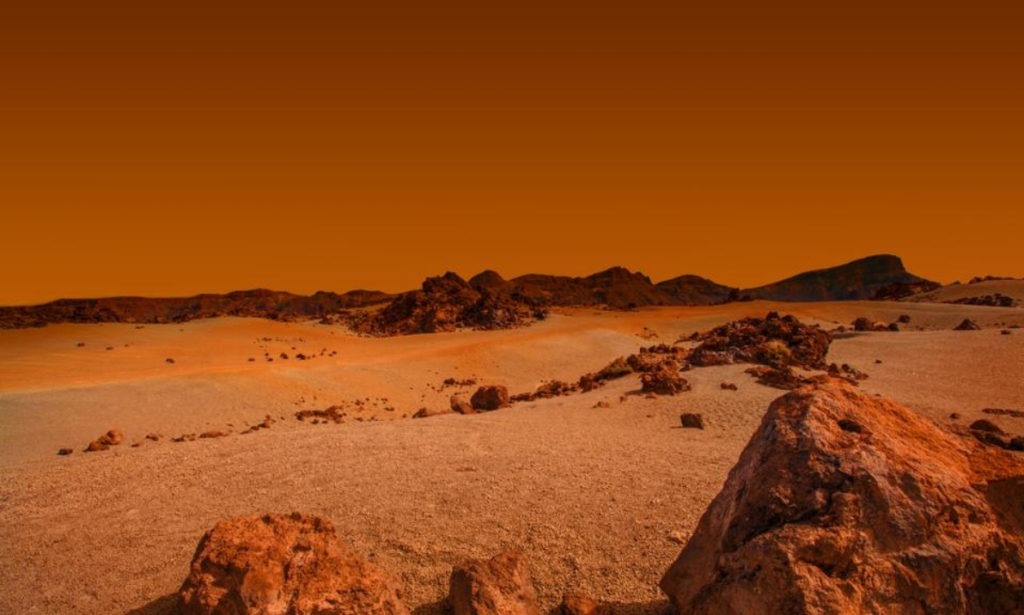The United Arab Emirates Space Agency launched an uncrewed space exploration mission to Mars. The satellite is called Hope. The Hope Probe was launched on the 19th of July 2020 and reached Mars on the 9th of February 2021, funded by the UAE Space Agency. But the mission really started in 2014; it took six years of planning, executing, testing, and seven months to arrive at the Red Planet. And there are still three more years of science operations on the calendar for the Hope Probe.
Dubai’s Burj Khalifa glowed red to mark the probe’s arrival at Mars:

Every 26 months, Earth and Mars are in optimum alignment and the distance between them is shortened. This opportunity finally came around and so three countries launched their own missions. Surprisingly, the Emirates Mars Mission was the first to arrive at the red planet of the three missions launched in the same month, marking the UAE as the fifth country in history to reach Mars, and the only Arab country ever.
Main objectives of the mission
The mission is aiming to enhance the capabilities of Emirati engineers and increase human knowledge about the atmosphere of Mars. The space probe is going to study the weather and atmosphere of the Red Planet, and how the weather changes from one region to another. It will provide:
- The reason for extreme climatic change in the Martian atmosphere.
- Why Mars is losing its hydrogen and oxygen into space.
- The connection between the upper and lower levels of the Martian atmosphere.
Once upon a time, the planet sustained water, and it is evident in its structure and soil, with traces of water vapor and ice. Experts believe that 3.5 billion years ago, it held a lake and flowing rivers, so the Emirates Mars Infrared Spectrometer will measure Martian dust, ice clouds, and water.
There are many similarities between Earth and how Mars was about 2 billion years ago. Data has shown traces of water on the Red Planet 2 billion years ago. We believe it had a very thick atmosphere, it had water and liquid state.
Hessa Al-Matrooshi, science lead of Data Analysis and Management of EMM
Atmospheric changes
In the last century, it was discovered that Mars was once capable of hosting ecosystems. Additionally, over the millions of years, the Red Planet went through drastic transformations. Yet, it has always shown the potential to expand human civilization to it, and now we can explore it and understand more.
The Hope Probe will be the first probe to provide a complete picture of the Martian atmosphere as it will repeat its planet-wide observations and orbit the planet for one Martian year, which is about two Earth years. The search continues until 2024 to understand the climate’s changes of the Red Planet.
On the heels of this astronomical step, the UAE announced on October 5th 2021, a year after the successful Mars mission, a new mission to explore Venus and the asteroid belt. This new endeavor is set to be far more complicated than the efforts behind the Mars mission. This mission will execute the first Arab landing on an asteroid, said his highness Sheikh Mohammed bin Rashid Al Maktoum, Vice-President and Prime Minister of the UAE and Ruler of Dubai. The journey into the stars is going to be seven times longer than the previous Hope mission.
The mission will be launched in 2028 as it takes seven years to develop the highly advanced spacecraft. This five-year expedition is part of a larger collective of projects by the UAE in preparation for the celebration of the country’s 50th year called “Projects of the 50th.” His Highness followed up this otherworldly announcement with a statement on twitter saying, “A third of the stars in the sky have Arab names, because Arabs were pioneers of astronomy. Our mission is to boost the glory of the Arab civilization. If we don’t act today, when will we?”



